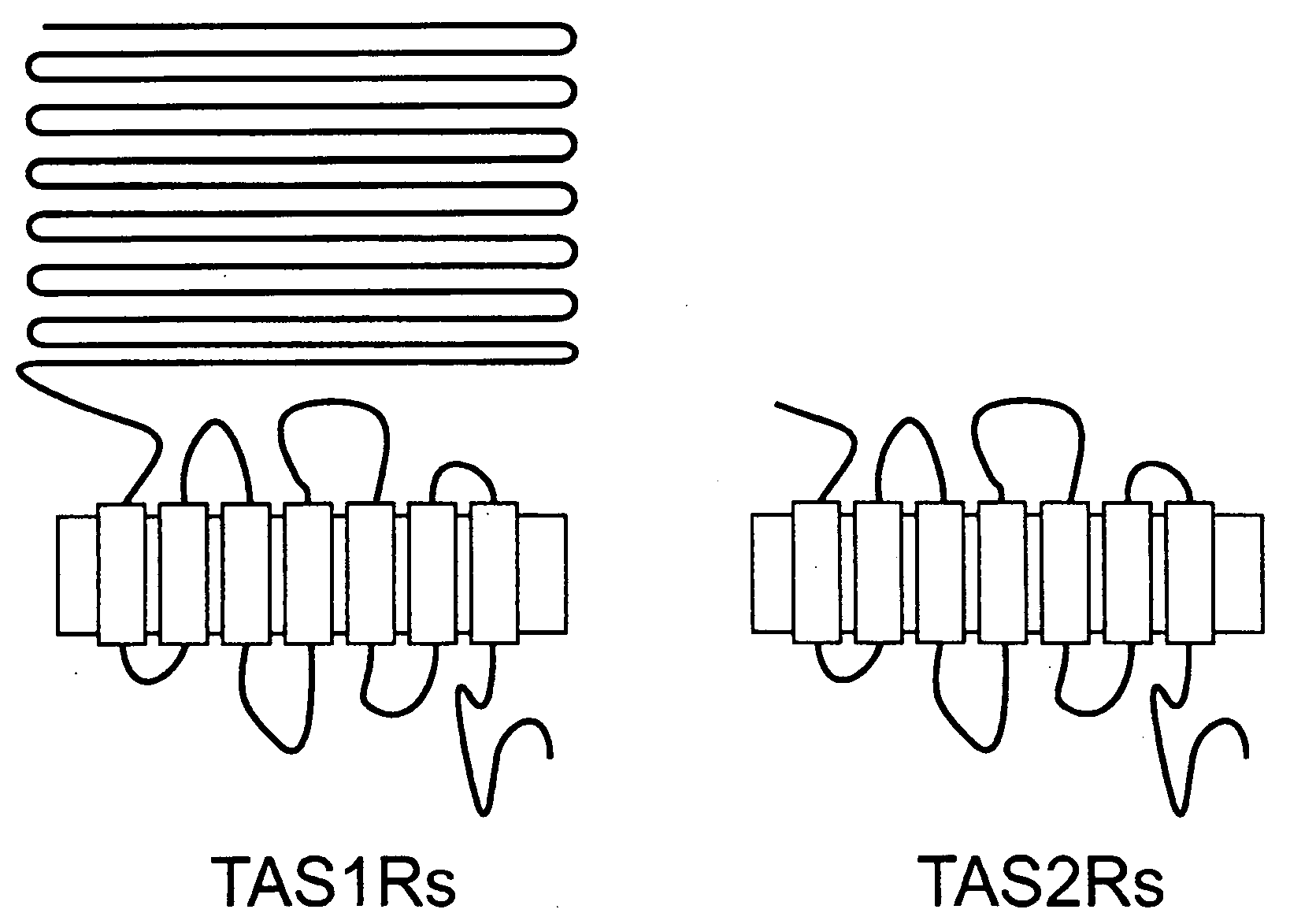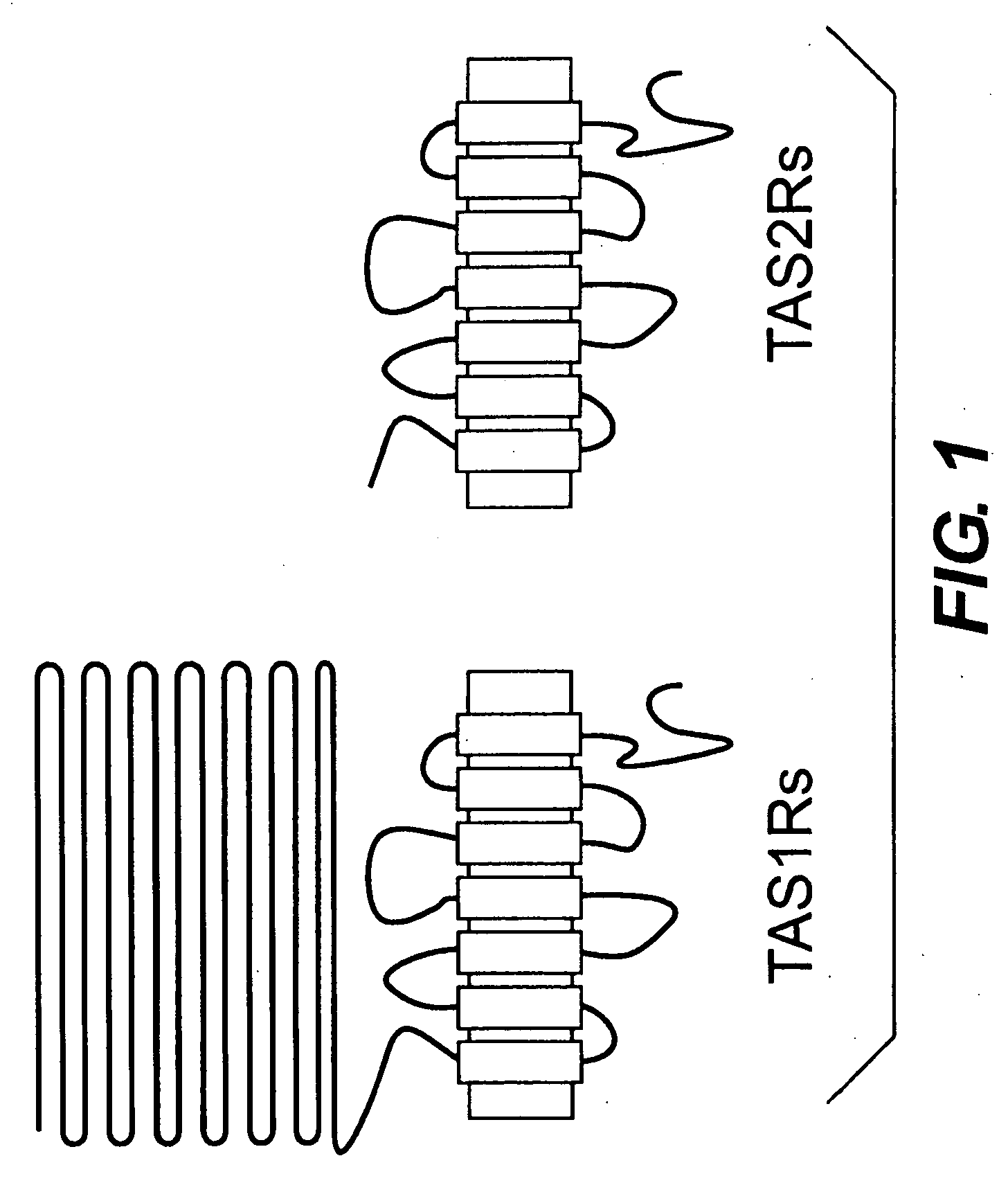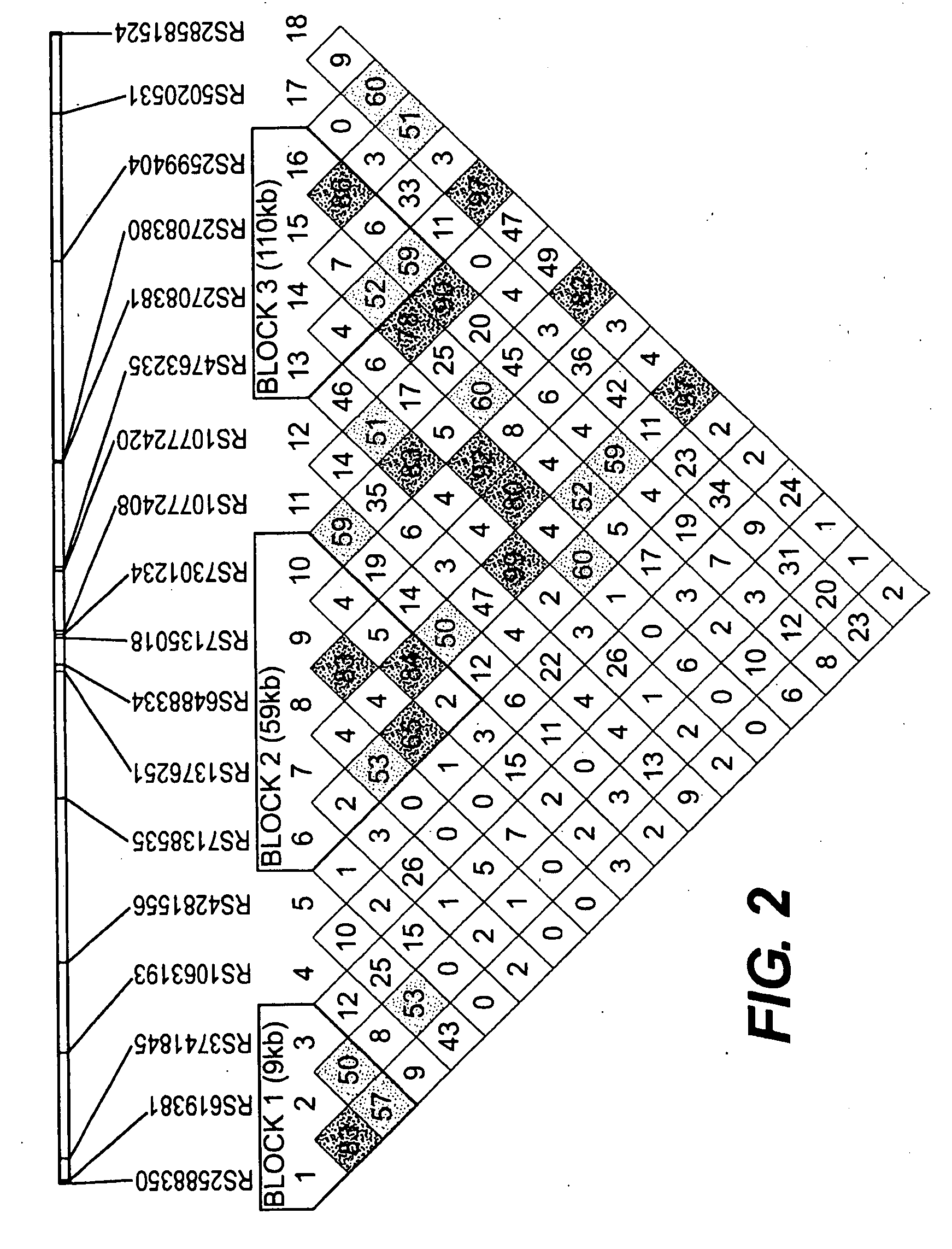Genetic marker for increased risk for obesity-related disorders
a genetic marker and increased risk technology, applied in the field of genetic markers for increased risk of obesity-related disorders, can solve the problems of poor characterization, small inter-individual difference in sweet perception, and variability of individual responses to sweet compounds, etc., to increase the risk of subjects. , the effect of increasing the risk of subjects
- Summary
- Abstract
- Description
- Claims
- Application Information
AI Technical Summary
Benefits of technology
Problems solved by technology
Method used
Image
Examples
example 1
SNP Mining and Selection
[0112]The Human Genome Database (dbSNP) was used to mine SNPs. SNPs that have been experimentally validated by others (e.g., HapMap) and / or SNPs that predict a functional variant were given priority for further evaluation. Further, the International HapMap Project database was used to identify haplotype tagging SNPs within a 20 kilo-base flanking region of the taste receptor genes. In addition, SNPs were chosen which were polymorphic in the CEU cohort (Utah residents with ancestry from northern and western Europe), have an r2 cutoff of 0.8 and a mean frequency of 0.15.
[0113]SNP Genotyping
[0114]SNPs were genotyped in over 1300 samples from the Old Order Amish of Lancaster County (OOA) cohort. Participants in the AFDS, the Old Order Amish of Lancaster, Pa., have a common lifestyle and socioeconomic status, and possess detailed genealogical records dating to the period of their early migration from Europe in the 1700's (Hseuh et al.) Candidate haplotype-tagging ...
example 2
Determination of Linkage Disequilibrium of Selected SNPs
[0121]The extent of linkage disequilibrium (LD) was determined using the software package Haploview. Haploview generates marker quality statistics, LD information, haplotype blocks, population haplotype frequencies and single marker association statistics. Pedigree data can be loaded as either partially or fully phased chromosomes or as unphased diplotypes in the standard Linkage format. The latter format also allows the user to specify family structure information as well as disease affection or case / control status. Marker information, including name and location is loaded separately. Upon loading a dataset, the software presents to the user a series of marker genotyping quality metrics. These include a check for conformance with Hardy-Weinberg equilibrium, a tally of Mendelian inheritance errors and the percentage of individuals successfully genotyped for that marker. The program filters out markers that fall below a preset t...
example 3
Association of Taste Receptor Variance with Glucose Homeostasis
[0123]To determine whether any taste receptor variants are associated with glucose homeostasis, associations of glucose and insulin areas under the curve (AUC) with SNP genotypes was assessed. A standard 3-hour oral glucose tolerance test (OGTT) (Hseuh et al.) was administered to the 693 non-diabetic AIDS subjects exhibiting the 47 SNPs identified in Example 1. Six TAS2R haplotype-tagging SNPs on chromosome 12 showed significant associations with glucose AUC (Table 2). Three of these SNPs were also significantly associated with insulin AUC as shown in Tables 4 and 5: rs2588350, a noncoding SNP ˜1 kb upstream of the TAS2R gene cluster; rs3741845, a nonsynonymous coding SNP in TAS2R9 (T560C6 encoding Ala187Val); and rs10772420, a nonsynonymous coding SNP in TAS2R48 (A895G, encoding Cys299Arg). No TAS2R-tagging SNPs on chromosomes 5 or 7 were associated with both glucose and insulin AUC, although a single noncoding SNP on c...
PUM
| Property | Measurement | Unit |
|---|---|---|
| Level | aaaaa | aaaaa |
Abstract
Description
Claims
Application Information
 Login to View More
Login to View More - R&D
- Intellectual Property
- Life Sciences
- Materials
- Tech Scout
- Unparalleled Data Quality
- Higher Quality Content
- 60% Fewer Hallucinations
Browse by: Latest US Patents, China's latest patents, Technical Efficacy Thesaurus, Application Domain, Technology Topic, Popular Technical Reports.
© 2025 PatSnap. All rights reserved.Legal|Privacy policy|Modern Slavery Act Transparency Statement|Sitemap|About US| Contact US: help@patsnap.com



